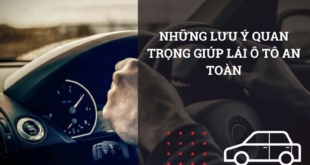Lái xe khi trời mưa tiềm ẩn nhiều nguy cơ mất lái, tai nạn do tầm nhìn bị hạn chế và mặt đường trơn trượt. Để đảm bảo an toàn, người lái cần trang bị đầy đủ kiến thức và kỹ năng lái xe khi trời mưa. Bài viết sau sẽ giới thiệu những kinh nghiệm lái xe ô tô khi trời mưa dễ dàng, chi tiết nhất. Cùng khám phá ngay nhé!
Chuẩn Bị Xe Ô Tô Trước Khi Lái
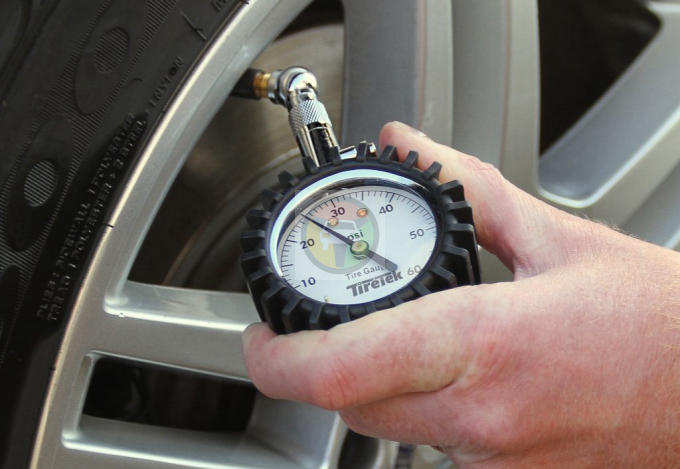
Trước khi lái xe dưới trời mưa, cần kiểm tra kỹ các bộ phận của xe, đặc biệt là hệ thống phanh, lốp xe, đèn xe…Đảm bảo rằng xe ở trong tình trạng tốt nhất để có thể di chuyển an toàn trong điều kiện thời tiết mưa gió.Nếu phát hiện bất kỳ vấn đề nào, bạn cần khắc phục ngay trước khi lái xe.
Bật Đèn Ô Tô
Mưa lớn gây cản trở tầm nhìn của người điều khiển phương tiện tham gia giao thông. Kể cả khi kính xe đã được gạt nước thì đôi lúc tầm nhìn vẫn bị trắng xóa, không quan sát rõ các phương tiện đang di chuyển trên đường.
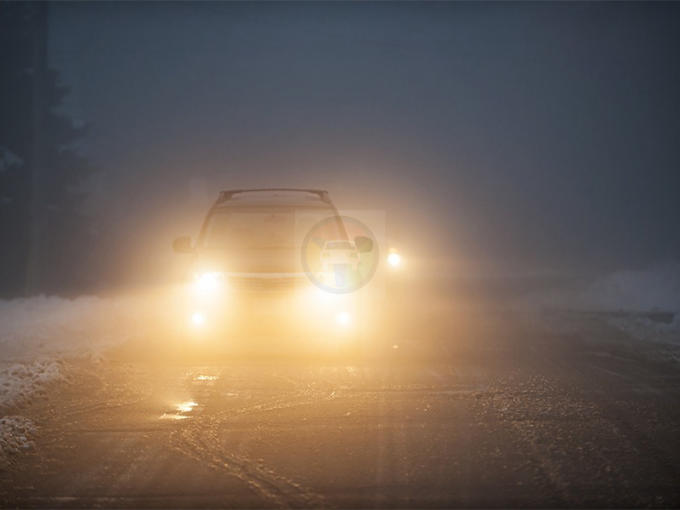
Vì thế tốt nhất nên bật đèn (đèn cos, đèn sương mù) cả ban ngày và ban đêm. Bật đèn ô tô giúp tăng khả năng quan sát của người lái xe và của những người tham gia giao thông khác. Tuy nhiên hạn chế bật đèn pha, đèn siêu sáng vì những loại đèn này phản ánh sáng khiến cho người điều khiển phương tiện đối diện bị lóa.
Giữ Khoảng Cách An Toàn
Trời mưa, tầm nhìn bị hạn chế, hiệu quả phanh giảm, do đó cần giữ khoảng cách an toàn với xe phía trước. Nếu chạy bám đuôi hoặc đuổi sát theo ô tô chạy trước, bạn sẽ không kịp xử lý, dễ gây tai nạn khi xe phía trước phanh gấp.
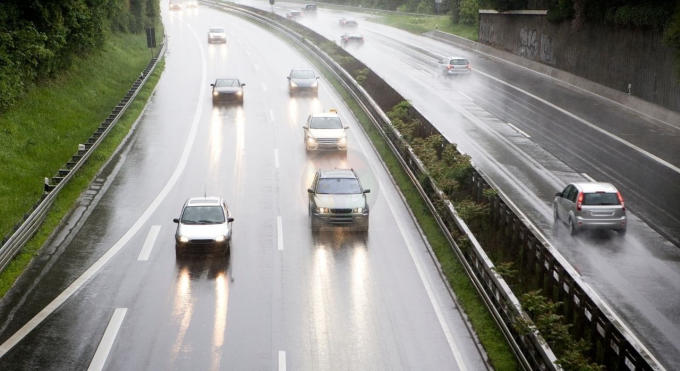
Giảm Tốc Độ Lái Xe
Trời mưa khiến đường trơn trượt, do đó bạn cần giảm tốc độ để đảm bảo an toàn. Tốc độ tối đa khi lái xe trong điều kiện trời mưa là 60 km/h. Nếu trời mưa to và tầm nhìn bị hạn chế, bạn nên giảm tốc độ xuống còn 40 km/h hoặc thấp hơn.
Không Chạy Gần Xe Lớn
Mưa làm hạn chế tầm nhìn của các phương tiện đang lưu thông trên đường. Lúc này, nếu chạy gần, song song với xe tải hoặc đi vào điểm mù của xe thì cực kỳ nguy hiểm.
Hơn nữa, chạy xe gần xe lớn rất dễ bị văng nước lên kính lái, làm cản trở tầm nhìn.
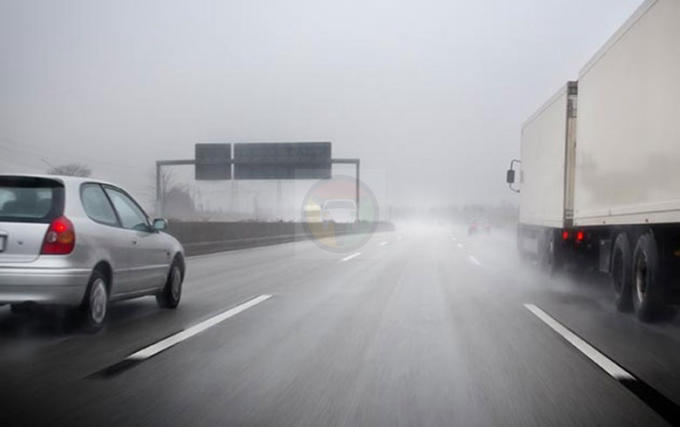
Không Phanh Gấp
Phanh gấp là một trong những nguyên nhân chính gây ra tai nạn khi lái ô tô trong điều kiện trời mưa. Bởi vì nước mưa làm đường trơn, giảm độ bám của lốp xe với mặt đường, dẫn đến quãng đường phanh dài hơn so với thời tiết thông thường.
Ngoài ra, phanh gấp còn dễ gây trượt lốp, khiến xe mất lái và gây tai nạn. Do đó, khi lái xe trong trời mưa, bạn nên chủ động giảm tốc từ từ khi gần đạp phanh.
Hành động vượt xe khi trời mưa được đánh giá khá nguy hiểm khi tầm nhìn của người tham gia giao thông đã bị hạn chế rất nhiều. Nếu bắt buộc phải vượt xe trước mắt thì cần quan sát cẩn thận, đưa ra tín hiệu đèn báo hiệu hành động cho mọi người hiểu nhằm hạn chế va chạm xảy ra.
Tập Trung Quan Sát Khi Lái
Tập trung quan sát khi lái xe là một trong những nguyên tắc quan trọng nhất để đảm bảo an toàn giao thông. Đặc biệt, khi trời mưa, tầm nhìn bị hạn chế và đường trơn trượt, việc tập trung quan sát càng trở nên cần thiết hơn.
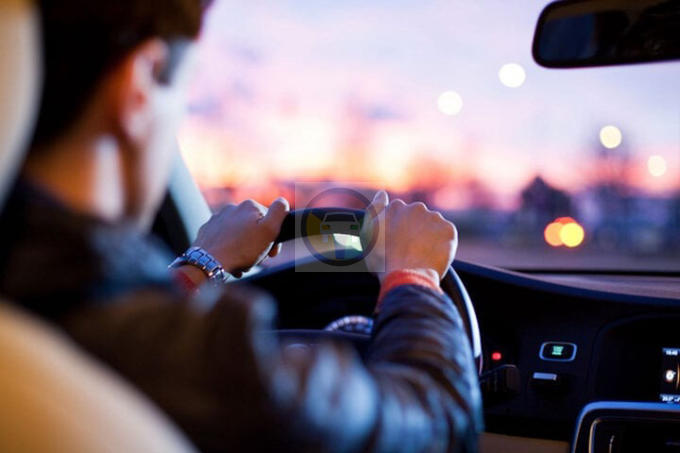
- Phía trước: Quan sát để giữ xe đi đúng làn đường, tránh đâm vào xe khác hoặc chướng ngại vật.
- Hai bên: Quan sát để tránh va chạm với xe đi ngược chiều, xe rẽ, xe đi ra từ đường phụ…
- Phía sau: Quan sát để tránh bị xe khác vượt, xe phía sau phanh gấp…
Chuyển Về Số Thấp, Chạy Đều Ga
Việc chuyển sang số thấp sẽ giúp động cơ sinh ra nhiều mô-men xoắn hơn, từ đó tăng lực kéo cho bánh xe. Điều này giúp xe dễ dàng di chuyển qua những đoạn đường trơn trượt hoặc vượt xe khác an toàn hơn.
Khi gặp sình lầy, đường ngập nước hoặc các trường hợp không thể đi nhanh, người lái xe không nên giảm ga mà nên giữ ga và đạp phanh để hạn chế nước vào ống khí thải.
Không Chạy Vào Vùng Nước Cao
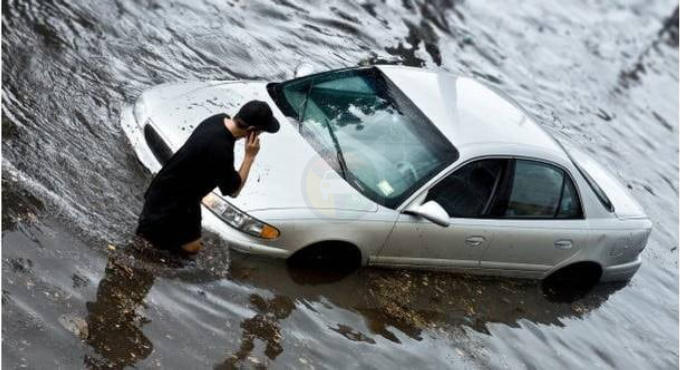
Khi lái xe trời mưa, tuyệt đối không chạy vào vùng nước cao bởi vì dễ gặp phải các tình huống nguy hiểm:
- Gây mất kiểm soát xe: Nước ngập cao có thể khiến xe bị mất lực bám đường, dẫn đến trượt bánh, mất lái.
- Gây hư hỏng xe: Nước ngập cao có thể tràn vào động cơ, hộp số, hệ thống điện… gây hư hỏng nặng cho xe.
- Gây nguy hiểm cho người lái xe: Nước ngập cao có thể khiến người lái xe bị cuốn trôi, đuối nước, hoặc bị điện giật.
Chạy Ở Tâm Đường, Bám Sát Vạch Kẻ, Đi Đúng Làn Đường Quy Định
Với những đoạn đường được xây dựng đúng chuẩn, phần tâm sẽ cao hơn so với hai bên để nước mưa có thể dạt về hai bên và thoát vào cống. Khi trời mưa bão lớn, tầm nhìn ở cự ly ngắn, đường ngập nhiều, việc chạy xe ở tâm đường sẽ giúp bạn tránh được những nguy hiểm tiềm ẩn như:
- Xe bị trượt bánh, mất lái.
- Xe bị ngập nước.
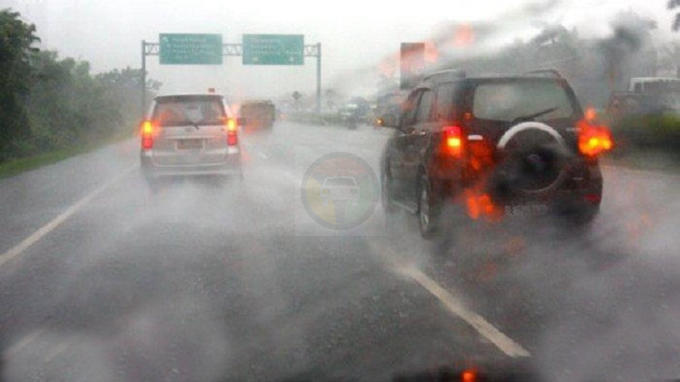
Tuy nhiên, bạn vẫn phải đảm bảo chạy đúng làn đường, không lấn sang làn đường ngược chiều để tránh nguy hiểm.
Hi vọng kinh nghiệm lái xe ô tô trời mưa sẽ hữu ích cho bạn. Nếu chưa tự tin với tay lái, cần bổ túc lái xe chuyên nghiệp, liên hệ với Trung Tâm Đào Tạo & Sát Hạch Lái Xe TP. HCM để được hỗ trợ nhanh chóng. Với đội ngũ giáo viên giỏi nhiệt tình, chúng tôi tự tin giúp bạn vững tay lái trên mọi cung đường.
 Trường đào tạo & thi sát hạch lái xe tại TP Hồ Chí Minh Trường đào tạo, dạy học và thi sát hạch lái xe máy, xe oto ở Thành Phố Hồ Chí Minh
Trường đào tạo & thi sát hạch lái xe tại TP Hồ Chí Minh Trường đào tạo, dạy học và thi sát hạch lái xe máy, xe oto ở Thành Phố Hồ Chí Minh


